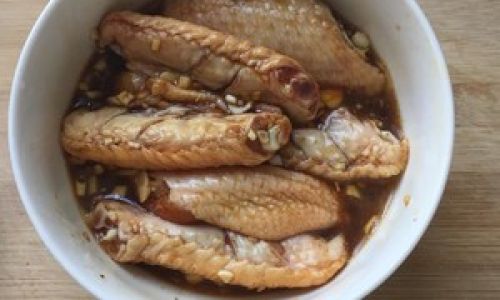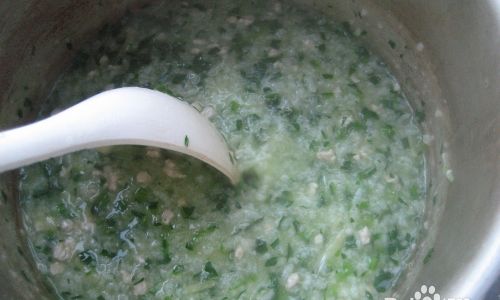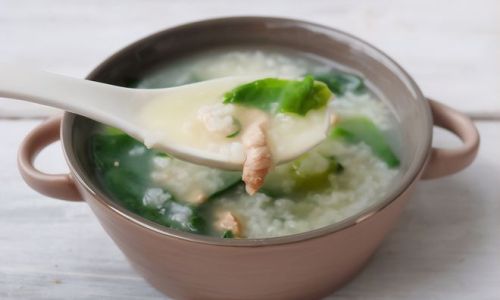Crispy ginger chicken, a beloved dish in many Asian cuisines, combines the bold warmth of ginger with the satisfying crunch of perfectly fried chicken. This recipe transcends cultural boundaries, offering a harmonious blend of sweet, savory, and aromatic flavors that tantalize the taste buds. Whether you’re a home cook looking to impress dinner guests or a culinary enthusiast seeking to expand your repertoire, mastering this dish requires attention to detail, quality ingredients, and a few insider techniques. In this comprehensive guide, we’ll explore the secrets to achieving restaurant-quality crispy ginger chicken, from marinating the meat to achieving that coveted golden-brown crust.
The Foundation: Selecting the Right Ingredients
The success of any dish hinges on the quality of its components, and crispy ginger chicken is no exception. Here’s a breakdown of the essential ingredients and why they matter:
-
Chicken: Opt for boneless, skinless chicken thighs or breasts. Thighs are often preferred for their higher fat content, which keeps the meat juicy during frying. If using breasts, consider pounding them to an even thickness to ensure uniform cooking.
-
Ginger: Fresh ginger root is non-negotiable. Avoid powdered ginger, as it lacks the pungent, citrusy kick of its fresh counterpart. Peel the ginger using a spoon (to minimize waste) and grate it finely for maximum flavor release.
-
Aromatics and Seasonings: Garlic, soy sauce, rice vinegar, and sesame oil form the flavor backbone. For a hint of sweetness, incorporate honey or brown sugar. Cornstarch is crucial for creating a light, crispy coating.

-
Oil: Use a neutral oil with a high smoke point, such as vegetable or peanut oil, for frying. This ensures the chicken cooks evenly without absorbing excess grease.
-
Optional Additions: For depth, consider adding a splash of Shaoxing wine or a pinch of white pepper. Garnish with thinly sliced scallions or toasted sesame seeds for visual appeal.
Marination: The Key to Flavorful, Tender Chicken
Marinating is not merely a preliminary step—it’s a transformative process that infuses the chicken with flavor while tenderizing the meat. Here’s how to do it right:
-
Create the Marinade: In a bowl, combine grated ginger, minced garlic, soy sauce, rice vinegar, sesame oil, honey, and a pinch of salt. Whisk until the ingredients emulsify.
-
Marinating Time: For optimal results, marinate the chicken for at least 30 minutes (or up to 4 hours in the refrigerator). This allows the meat to absorb the aromatic flavors while the acid in the vinegar gently breaks down tough fibers.
-
Avoid Over-Marinating: While marinating enhances flavor, exceeding 4 hours can cause the chicken to become overly salty or mushy, especially if using soy sauce with high sodium content.
The Coating: Achieving Light, Airy Crispiness
The coating is where many home cooks stumble. A heavy, bready batter yields a greasy result, while a too-thin layer fails to crisp. Follow these tips for perfection:
-
Cornstarch vs. Flour: Cornstarch is the secret weapon for ultra-crispy chicken. It absorbs less oil than flour and creates a delicate, shatter-crisp texture. For a hybrid coating, mix cornstarch with a small amount of all-purpose flour (e.g., a 3:1 ratio) for added structure.
-
Double Coating Technique: For extra crunch, dip the marinated chicken in a beaten egg wash, then dredge it in the cornstarch mixture. Repeat for a thicker coating, if desired.
-
Dry the Chicken: Pat the marinated chicken dry with paper towels before coating. Excess moisture will cause the coating to steam rather than fry, resulting in a soggy finish.
Frying: Mastering Heat and Timing
Frying is as much an art as a science. Here’s how to navigate the sizzling process:
-
Oil Temperature: Heat the oil to 350°F (175°C). Use a deep-fry thermometer to monitor the temperature. If the oil is too cool, the chicken will absorb grease; if too hot, the coating may burn before the meat cooks through.
-
Frying in Batches: Avoid overcrowding the pan. Fry the chicken in small batches, ensuring each piece has ample space to cook evenly. Overcrowding lowers the oil temperature and leads to uneven browning.
-
Frying Time: Cook the chicken for 5–7 minutes per batch, or until the coating turns golden brown and the internal temperature reaches 165°F (74°C). Adjust the heat as needed to maintain a consistent oil temperature.
-
Draining Excess Oil: Transfer the fried chicken to a wire rack set over a baking sheet. Avoid paper towels, as they trap steam and soften the crust. A wire rack allows air to circulate, preserving crispness.
The Ginger Sauce: Elevating the Dish
While the crispy chicken is the star, the ginger sauce ties the dish together with its vibrant, aromatic punch. Here’s how to craft a balanced sauce:
-
Sauté Aromatics: In a separate pan, heat a small amount of oil and sauté minced garlic and grated ginger until fragrant but not browned.
-
Build the Sauce: Add soy sauce, honey, rice vinegar, and a splash of water or chicken broth. Simmer gently to meld the flavors. For a glossy finish, swirl in a teaspoon of butter or a cornstarch slurry (equal parts cornstarch and water) to thicken the sauce.
-
Toss or Serve Alongside: Toss the fried chicken in the sauce for a sticky, glazed finish, or serve the sauce on the side for dipping. The latter preserves the chicken’s crispness longer.
Pro Tips for Restaurant-Worthy Results
-
Velveting the Chicken: A Chinese cooking technique, velveting involves marinating the chicken in a mixture of egg white, cornstarch, and baking soda. This creates an ultra-tender texture. Rinse off the marinade before coating and frying.

-
Baking Soda Hack: For extra-crispy skin, add a pinch of baking soda to the cornstarch coating. Baking soda raises the pH level, accelerating browning and creating a lacquer-like crust.
-
Resting Time: Let the fried chicken rest for 5 minutes after cooking. This allows the juices to redistribute, ensuring moist meat and a crisper coating.
-
Reheating Crispiness: To revive leftovers, reheat the chicken in a preheated 400°F (200°C) oven for 5–7 minutes. Avoid the microwave, which turns the coating soggy.
Serving Suggestions and Pairings
Crispy ginger chicken shines when paired with complementary flavors and textures:
- Steamed Rice: The neutral canvas of jasmine or basmati rice balances the dish’s bold flavors.
- Stir-Fried Vegetables: Broccoli, snap peas, or bok choy add freshness and crunch.
- Pickled Vegetables: A side of quick-pickled cucumbers or daikon cuts through the richness.
- Noodle Bowls: Serve the chicken over udon or rice noodles with a drizzle of the ginger sauce.
For a complete meal, garnish with thinly sliced scallions, cilantro, or a sprinkle of toasted sesame seeds.
Common Mistakes to Avoid
-
Using Old Oil: Reusing oil multiple times can impart a rancid taste. Start with fresh oil for each batch.
-
Skipping the Marinade: Without proper marination, the chicken may lack depth and tenderness.
-
Overcrowding the Pan: This lowers the oil temperature and results in greasy, unevenly cooked chicken.
-
Underseasoning the Coating: Season the cornstarch mixture with salt and pepper to ensure flavor in every bite.
-
Rushing the Process: Patience is key. Rushing the marination or frying steps compromises the final dish.
Variations to Explore
Once you’ve mastered the classic recipe, experiment with these twists:
-
Spicy Ginger Chicken: Add a chopped chili pepper or a dash of Sriracha to the marinade or sauce.
-
Honey Ginger Glaze: Increase the honey in the sauce and finish with a squeeze of lime for a sweet-tangy contrast.
-
Gluten-Free Option: Substitute soy sauce with tamari or coconut aminos, and use rice flour instead of wheat flour in the coating.
-
Air Fryer Adaptation: For a lighter version, air-fry the coated chicken at 400°F (200°C) for 15–20 minutes, flipping halfway through.
The Cultural Significance of Ginger Chicken
Ginger chicken holds a special place in many Asian cuisines, from Chinese takeout staples to homestyle Korean yangnyeom chicken. The dish’s popularity stems from its balance of comfort and sophistication—a testament to the culinary philosophy of yin and yang. Ginger, revered for its medicinal properties, adds warmth and digestive benefits, while the crispy texture satisfies primal cravings.
In modern times, crispy ginger chicken has transcended cultural boundaries, becoming a global favorite. Its adaptability—whether served as a party appetizer, weeknight dinner, or gourmet showstopper—cements its status as a timeless classic.
Conclusion: The Pursuit of Perfection
Crispy ginger chicken is more than a recipe—it’s a culinary journey that rewards patience, precision, and passion. By mastering the nuances of marination, coating, and frying, you unlock a dish that delights the senses and nourishes the soul. Whether you’re cooking for a crowd or savoring a quiet meal, this recipe invites you to embrace the art of simplicity and the joy of a perfectly crispy bite. So, gather your ingredients, heat the oil, and let the sizzle begin—your masterpiece awaits.






0 comments